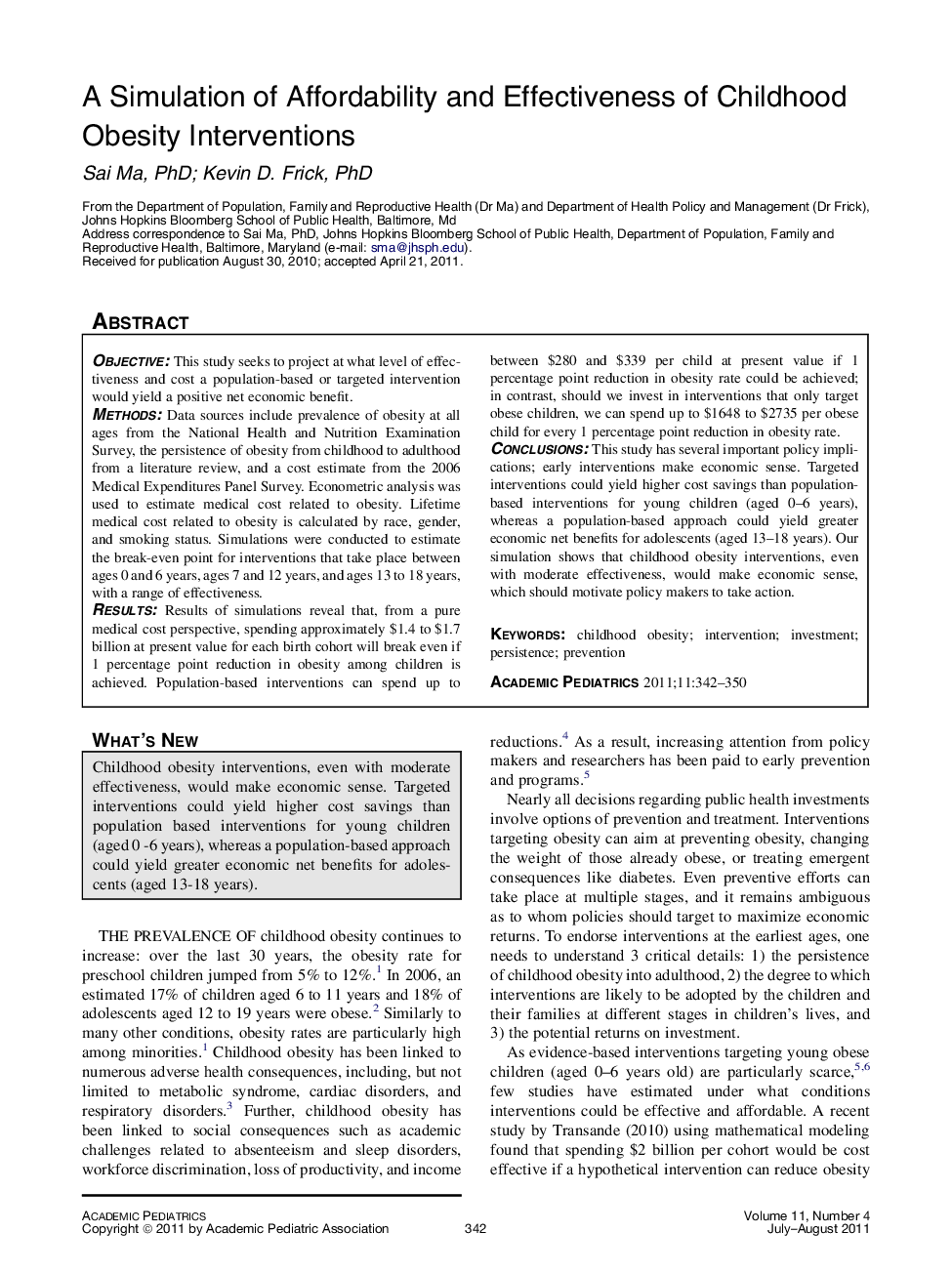| کد مقاله | کد نشریه | سال انتشار | مقاله انگلیسی | نسخه تمام متن |
|---|---|---|---|---|
| 4139604 | 1272214 | 2011 | 9 صفحه PDF | دانلود رایگان |

ObjectiveThis study seeks to project at what level of effectiveness and cost a population-based or targeted intervention would yield a positive net economic benefit.MethodsData sources include prevalence of obesity at all ages from the National Health and Nutrition Examination Survey, the persistence of obesity from childhood to adulthood from a literature review, and a cost estimate from the 2006 Medical Expenditures Panel Survey. Econometric analysis was used to estimate medical cost related to obesity. Lifetime medical cost related to obesity is calculated by race, gender, and smoking status. Simulations were conducted to estimate the break-even point for interventions that take place between ages 0 and 6 years, ages 7 and 12 years, and ages 13 to 18 years, with a range of effectiveness.ResultsResults of simulations reveal that, from a pure medical cost perspective, spending approximately $1.4 to $1.7 billion at present value for each birth cohort will break even if 1 percentage point reduction in obesity among children is achieved. Population-based interventions can spend up to between $280 and $339 per child at present value if 1 percentage point reduction in obesity rate could be achieved; in contrast, should we invest in interventions that only target obese children, we can spend up to $1648 to $2735 per obese child for every 1 percentage point reduction in obesity rate.ConclusionsThis study has several important policy implications; early interventions make economic sense. Targeted interventions could yield higher cost savings than population-based interventions for young children (aged 0–6 years), whereas a population-based approach could yield greater economic net benefits for adolescents (aged 13–18 years). Our simulation shows that childhood obesity interventions, even with moderate effectiveness, would make economic sense, which should motivate policy makers to take action.
Journal: Academic Pediatrics - Volume 11, Issue 4, July–August 2011, Pages 342–350